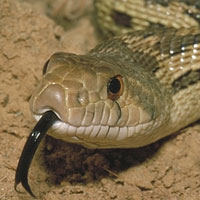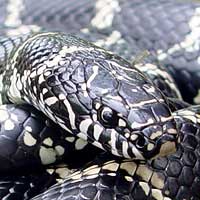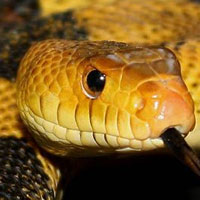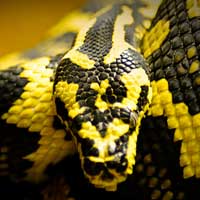Everything You Need to Know About the Puff Adder
The Puff Adder (Bitis arietans) belongs to the Viperidae snake family, known for its highly venomous species equipped with long, hinged fangs and potent venom. Native to sub-Saharan Africa and parts of the Arabian Peninsula, this snake is characterized by its stout body, excellent camouflage, and unique puffing and hissing behavior when threatened, making it both a formidable predator and an integral part of its ecosystem.
Scientific Name: Bitis arietans
Snake Family: Viperidae
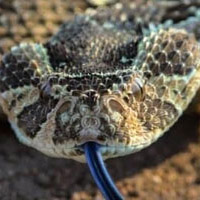
An Overview of the Puff Adder
The Puff Adder (Bitis arietans) is one of Africa's most widespread and venomous snakes, known for its distinctive puffing and hissing behavior when threatened. With a stout body and a coloration pattern that provides excellent camouflage, this viper is a master of ambush predation. The Puff Adder is responsible for more snakebite incidents in Africa than any other species, primarily due to its widespread presence and highly potent venom. Despite its fearsome reputation, this snake plays a crucial role in controlling rodent populations, making it an essential part of its ecosystem.
Where Does the Puff Adder Live?
The Puff Adder occupies a vast range of habitats across Africa and parts of the Arabian Peninsula. Key habitat features include:
- Geographic Range: Found throughout sub-Saharan Africa, North Africa, and parts of the Arabian Peninsula.
- Preferred Environments: Savannas, grasslands, woodlands, and semi-deserts, avoiding only extreme deserts and rainforests.
- Climate: Adaptable to a variety of climates, from arid to tropical conditions.
The Puff Adder is often found basking near trails or hiding in tall grass, blending seamlessly with its surroundings. This adaptability to diverse environments, including human-modified areas, has allowed it to thrive across its range. Below is a table summarizing its habitat preferences:
| Habitat Feature | Description |
|---|---|
| Geographic Range | Sub-Saharan Africa, North Africa, Arabian Peninsula |
| Preferred Terrain | Savannas, grasslands, woodlands |
| Climate | Arid to tropical |
What Does the Puff Adder Eat?
The Puff Adder is a carnivorous predator with a diet that reflects its ambush hunting strategy. Key dietary details include:
- Primary Prey: Small mammals such as rodents and shrews.
- Occasional Prey: Birds, amphibians, and reptiles, including other snakes.
- Hunting Strategy: Uses its excellent camouflage to remain hidden and strikes with lightning speed when prey comes within range.
The Puff Adder’s venom quickly immobilizes its prey, allowing it to consume its meal whole. By controlling rodent populations, this snake plays a vital role in reducing the spread of agricultural pests and diseases, contributing significantly to the health of its ecosystem.
Understanding the Behavior of the Puff Adder
The Puff Adder is a snake that relies on stealth and defensive behavior to survive. Key behavioral traits include:
- Activity Patterns: Primarily nocturnal, especially in hotter climates, but may be active during the day in cooler regions.
- Defensive Behavior: Inflates its body and hisses loudly as a warning before striking if provoked.
- Social Behavior: Solitary, except during mating season or when basking in shared sunlit areas.
While the Puff Adder is not inherently aggressive, its reliance on camouflage often results in accidental encounters with humans. Recognizing its behavior and avoiding unnecessary interaction is essential for safety.
Health and Lifespan of the Puff Adder
The Puff Adder is a hardy species with a long lifespan. Important health considerations include:
- Lifespan: 12-15 years in the wild, with some individuals living up to 20 years in captivity.
- Health Risks: Habitat destruction, road mortality, and persecution by humans are significant threats.
- Predators: Birds of prey, mongooses, and large mammals pose risks, particularly to juveniles.
Efforts to educate the public about the Puff Adder’s ecological role and implement conservation measures are crucial for maintaining healthy populations across its range.
How Does the Puff Adder Reproduce?
The Puff Adder’s reproductive cycle is well-adapted to its environment. Key details include:
- Mating Season: Occurs in spring, with males engaging in combat to secure mating rights.
- Reproductive Method: Ovoviviparous, meaning females give birth to live young instead of laying eggs.
- Litter Size: Produces 20-50 offspring per litter, depending on the female’s size and health.
- Hatchling Behavior: Newborns are fully venomous and independent, capable of hunting small prey immediately after birth.
The large litter size and independence of hatchlings ensure the Puff Adder’s success in diverse environments.
Safety Guidelines for Handling the Puff Adder
Handling the Puff Adder requires expertise and strict safety measures. Essential safety tips include:
- Always use professional tools such as snake hooks and secure transport containers.
- Wear protective gloves and boots to minimize the risk of envenomation.
- Ensure enclosures replicate the snake’s natural habitat and are escape-proof.
- Keep antivenom readily available and have a detailed emergency response plan in place.
Only trained professionals should handle this species. Public awareness of its behavior and ecological importance can help reduce unnecessary conflict and harm to both humans and the snake.
Disclaimer
The information provided in this article is for educational purposes only. SnakeEstate strongly advises against handling or interacting with venomous snakes, such as the Puff Adder, unless you are a trained and licensed professional. These snakes pose significant risks, and improper handling can result in serious injury or death. Always adhere to local regulations and prioritize safety when dealing with wildlife.
Other Snakes In This Species
 Asp Viper
Asp Viper Black Mamba
Black Mamba Boomslang
Boomslang Brazilian Coral Snake
Brazilian Coral Snake Bushmaster
Bushmaster Coastal Taipan
Coastal Taipan Common Death Adder
Common Death Adder Common European Adder
Common European Adder Copperhead
Copperhead Coral Snake
Coral Snake Cottonmouth
Cottonmouth Eastern Brown Snake
Eastern Brown Snake Eastern Diamondback Rattlesnake
Eastern Diamondback Rattlesnake Egyptian Cobra
Egyptian Cobra Fer-de-lance
Fer-de-lance Forest Cobra
Forest Cobra Indian Cobra
Indian Cobra Inland Taipan
Inland Taipan Jameson’s Mamba
Jameson’s Mamba King Cobra
King Cobra Lancehead
Lancehead Lataste’s Viper
Lataste’s Viper Malayan Krait
Malayan Krait Mojave Rattlesnake
Mojave Rattlesnake New Guinea Small-eyed Snake
New Guinea Small-eyed Snake Nose-horned Viper
Nose-horned Viper Puff Adder
Puff Adder Russell’s Viper
Russell’s Viper Saw-scaled Viper
Saw-scaled Viper Solomon Island Coral Snake
Solomon Island Coral Snake South American Rattlesnake
South American Rattlesnake Tiger Snake
Tiger Snake Western Diamondback Rattlesnake
Western Diamondback Rattlesnake



